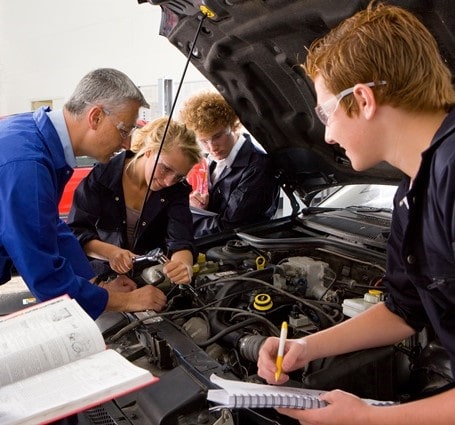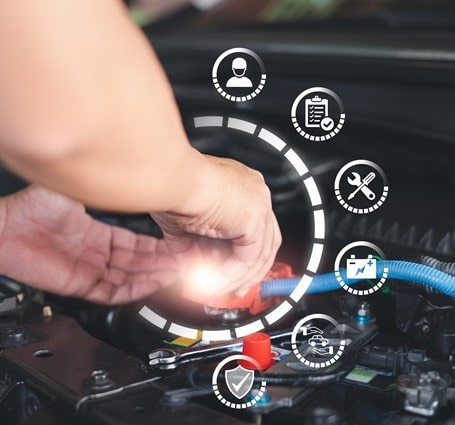
Teacher Spotlight: Nigel Campbell, Automotive Instructor
For Nigel Campbell, an Apex Technical School graduate and licensed automotive educator in the Automotive Service & Repair program, a passion for the
After a collision or accident, a car’s doors may be crushed, the paint may be chipped, or the fender may be dented. Individuals in the auto body trades are taught that collision damage can be classified by structural and cosmetic damage. Some cars sustain a combination of both damage types. Find out how an accident affects the operation and safety of a vehicle and how to identify types of collision damage.
Auto safety and car accident repairs have evolved in recent decades. Modern cars are designed with a crumple zone, or crush zone. Auto engineers construct special parts inside the car that are designed to be damaged, crushed and broken during an accident. A strong frame encloses the occupants, while crumple zones exist in the front and rear of the car.
When an accident happens, the crumple zones absorb crash energy and redistribute it. Crumple zones help keep vehicle occupants safe and unharmed. The first car to use crumple zones to protect passengers was the 1959 Mercedes-Benz W111 Fintail.
Collisions result in different types of vehicle damage. Like a scrape or bruise, some damage is visible to the eye. Other damage, like a broken bone below the skin, is hidden inside the structure of the car and requires an automotive or auto body mechanic to evaluate it. Hidden, or internal damage, can affect a vehicle’s suspension, mechanical or electrical systems.
Cosmetic damage on cars does not affect the function or structure of the vehicle. In fact, many people still safely drive cars with cosmetic damage such as scratches, dents and dings. However, it is important to repair cosmetic damage before it progresses—for example, paint scratches can turn into rust spots that disintegrate metal over time.
Collisions can harm a vehicle’s structure, or frame. Examples of structural damage include frontal damage and rear damage. In frontal damage, car hoods buckle to absorb impact, prevent windshield damage and protect the driver and front-seat passenger. Rear damage also relies on a crumple zone at the vehicle’s bumper to keep the oncoming vehicle from harming the fuel tank, trunk and backseat passengers.
An individual in the auto body trade can examine damaged vehicles for cosmetic and structural damage, while an automotive repair technician can evaluate hidden mechanical damage and determine how to make improvements. Some collision damage might be irreparable—in these cases, the owner may need to purchase a new vehicle instead of relying on car accident repairs.
*Apex Technical School and its instructors are licensed by the State of New York, New York State Education Department.
Disclaimer: Apex Technical School provides training for entry-level jobs. Not everything you may read about the industry is covered in our training programs.

For Nigel Campbell, an Apex Technical School graduate and licensed automotive educator in the Automotive Service & Repair program, a passion for the

The automotive landscape is facing changes on the horizon. These changes are largely in response to government mandates that encourage electrification, but also

For aspiring automotive technicians, one of the most critical aspects of building a successful career is gaining the necessary certifications. Certification not only